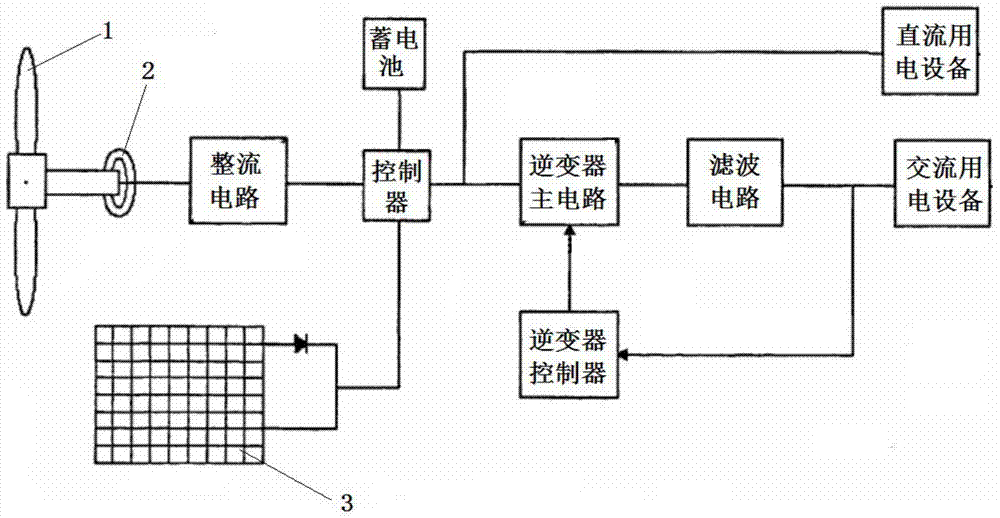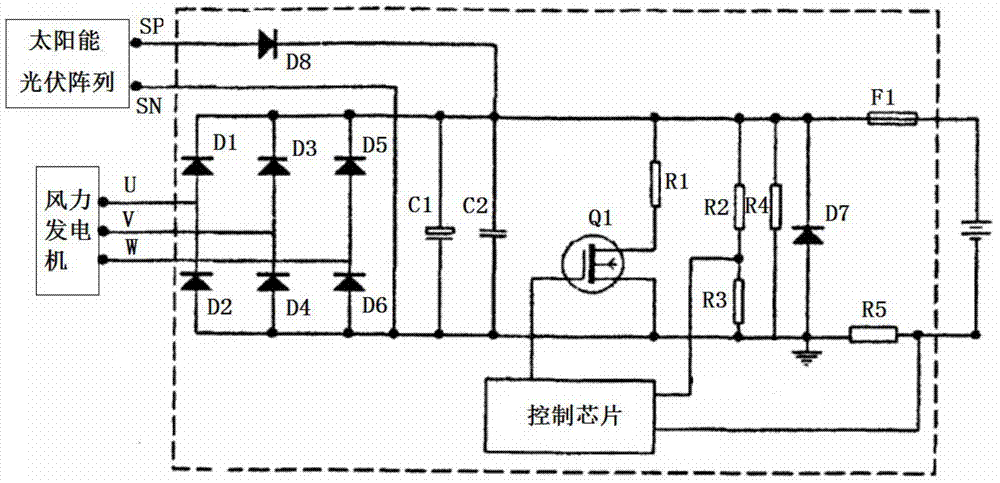Wind-solar electricity generation system used on expressway
A technology for wind power generation and highways, applied in photovoltaic power generation, wind power generation, photovoltaic power stations, etc., can solve the problem that power generation equipment cannot provide power frequency AC 220V and 380V, cannot meet road traffic control information equipment, and difficult equipment can provide stable and continuous power and other issues, to achieve the effect of convenient installation, long life and energy saving
- Summary
- Abstract
- Description
- Claims
- Application Information
AI Technical Summary
Problems solved by technology
Method used
Image
Examples
Embodiment Construction
[0020] The present invention will be further described below in conjunction with the accompanying drawings and embodiments.
[0021] Such as Figure 1 to Figure 2 As shown, it is a wind power generation system for highways according to the present invention, including solar photovoltaic array 3, fan 1, permanent magnet generator 2, electric wires, and power grid.
[0022] Wherein the solar photovoltaic array 3 and the fan 1 are both continuously tiled in two rows and fixedly installed on the inside of the guardrails on both sides of the isolation belt, the fan 1 is connected with the permanent magnet generator 2, and the permanent magnet generator Machines 2 are fixedly installed in two rows on the driveway below the solar photovoltaic array 3, and the output ends of the solar photovoltaic array 3 and the permanent magnet generator 2 are connected to the power grid through wires.
[0023] The power grid includes a rectifier circuit, a controller, an inverter controller, an in...
PUM
 Login to View More
Login to View More Abstract
Description
Claims
Application Information
 Login to View More
Login to View More - R&D
- Intellectual Property
- Life Sciences
- Materials
- Tech Scout
- Unparalleled Data Quality
- Higher Quality Content
- 60% Fewer Hallucinations
Browse by: Latest US Patents, China's latest patents, Technical Efficacy Thesaurus, Application Domain, Technology Topic, Popular Technical Reports.
© 2025 PatSnap. All rights reserved.Legal|Privacy policy|Modern Slavery Act Transparency Statement|Sitemap|About US| Contact US: help@patsnap.com


